

| Genetics Differences
in Haematology and Biochemistry of 8 Sighthound
breeds All photographs copyrighted to the photographers. Please do not use text or photos for any purpose without asking. In their
study entitled "Haematological and biochemical
variations among eight Sighthound breeds", Uhrikova
et al. analyze and compare the blood and chemistry
profiles of the following eight Sighthound breeds:
Azawakh, Borzoi, Greyhound, Italian Greyhound,
Pharaoh Hound, Sloughi, Saluki and Whippet Methods Haematology included white blood cell count (WBC), red blood cell count (RBC), platelet count (PLT), haemoglobin concentration (Hb), haematocrit (Hct), mean corpuscular volume (MCV), mean corpuscular Hb (MCH) and mean corpuscular Hb concentration (MCHC) Biochemistry includes total protein, albumin, urea, creatinine, concentration of calcium and phosphorus, alanine aminotransferase (ALT), aspartate aminotransferase (AST) and alkaline phosphatase activities (ALP). The results were analyzed statistically Results 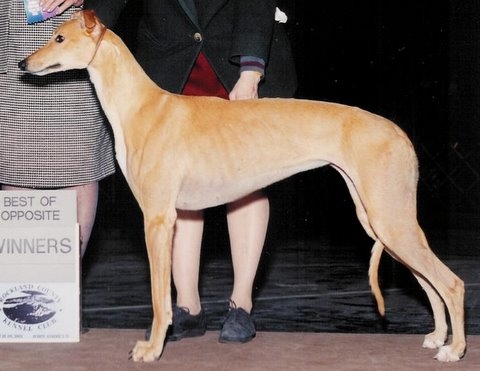 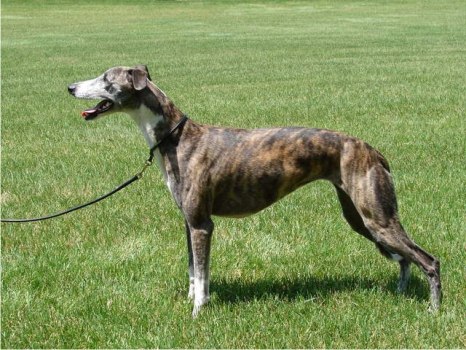 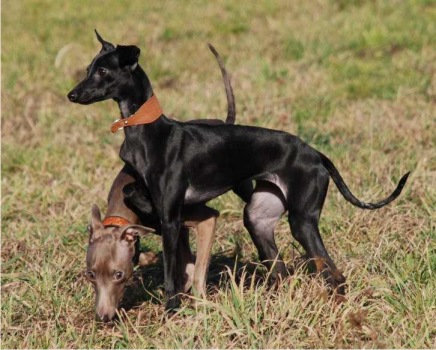 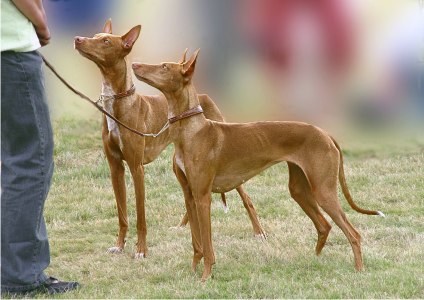
Greyhound © K.Lorenzo
Whippet ©
Gail Wieberdink
Italian Greyhound © Cora Nurnberger
Pharaoh Hounds ©
Schwab
~
Haematology No significant differences were found in the haematological profiles of Whippets and Greyhounds, and of Italian Greyhounds and Pharaoh Hounds. White blood cell counts (WBC): only Borzoi and Sloughis values fell within the margins of the Laboratory Reference Intervals (LRIs). Borzois had the highest mean of WBC but it fell withing the LRIs.The largest numbers of individuals with low WBC were found in Greyhounds (70.8%) and Whippets (57.4%). Other breeds had between between 8.7% and 57.4% of individuals with low WBC. Red Blood Cell Count (RBC): Increased red blood count, haemoglobin concentration and haematocrits above the Laboratory Reference Intervals were observed in all 8 breeds. However, three breeds stand out. 40% of the Azawakhs had RBC increases. In addition 72.3% of the Whippets , 70% of the Greyhounds and of the Azawakhs had increased haemoglobin concentrations. The results for the haematocrit were similar. Mean corpuscular Volume (MCV): MCV was within the Laboratory Reference intervals for 3 breeds; Sloughis, Azawakhs, Italian greyhounds. MCV was significantly elevated in Whippets and Greyhounds Mean corpuscular Hb (MCH): MCH was decreased or increased in some individuals in 7 breeds but not in the Azawakh Mean corpuscular Hb concentration (MCHC): MCHC was often above the LRIs values in all breeds Platelet count (PLT): Significantly lower platelet counts were found in Whippets and Greyhounds whereas the Azawakhs showed the highest.
No significant differences were found between the 2 African breeds: Sloughis and Azawakh. Albumin and total Protein: Increased concentrations of albumin and total protein were found in all 8 breeds. The highest albumin concentration was found in Salukis, the highest protein concentration in Pharaoh hounds Urea: a mild increase was found in all 8 breeds but always in less that 20% of the individuals Creatinine: Creatinine values were within the Laboratory Reference levels only in Salukis and Italian Greyhounds, they were significantly higher in Greyhounds. Borzois showed the second highest values with 25% of the dogs exceeding the LRIs but being within the Greyhound values. Liver enzymes: Alanine aminotransferase (ALT) was increased in all breeds with the Italian Greyhound showing significantly higher values, and the Borzoi the lowest. Alkaline Phosphatase (ALP) was significantly higher in Pharaoh hounds, but still within the limits of the Laboratory References Intervals. Calcium and Phosphorus: Only the Pharaoh hounds showed values of calcium concentration that fell within the LRIs. Decreased Calcium concentrations was found between 13.6-47.8% of individuals in the other breeds. The phosphorus concentration was different from LRIs in all breeds except the Azawakh. Conclusions The main findings were: - Increased albumin concentration, slightly decreased platelet count in all 8 breeds. - Decreased White Blood Cell count frequently found only in Whippets and Greyhounds. Similar Haematology between Whippets and Greyhounds - The similar Haematology in Whippets and Greyhounds is in agreement with genetic studies that revealed a close relationship between these two breeds, however the similarity in Haematology of Italian Greyhounds and Pharoah hounds remains puzzling - Sloughis and Azawakhs have the highest Red Blood Cell counts and show no significant differences in their Biochemistry. - The higher haemoglobin and haematocrit values as well as higher red blood cells counts in these 8 Sighthounds breeds, could, according to the authors, be an adaptation to athletic ability, as it would result in increased capacity to carry oxygen. - Italian Greyhounds, Pharaoh hounds, Greyhounds, Whippets, Azawakhs and Salukis had individuals with a white blood cell count lower than the Laboratory Reference Intervals - No Sloughis and no Borzoi had white blood cell counts lower than the LRIs - Azawakhs had the highest mean haemoglobin, red blood count and platelet count of all the 8 breeds - One of the major difference with other breeds is the increased concentration in serum creatinine in Greyhounds. The most likely explanation for this increase is, today and according to the authors, related to massive muscle mass. All Greyhounds in the study came from Ireland or the UK. A higher concentration of creatinine was also found by the authors in racing Whippets compared to non racing Whippets. It however it did not correlate with weight in either Greyhound or Whippets. - Significant higher Alanine aminotransferase (ALT) activity was found in Italian Greyhounds, values higher than LRIs in 61% of the Italian Greyhounds. Increased ALT are perhaps related to muscle dystrophy and necrosis in Greyhounds but unlikely in Italian Greyhounds, subclinical Hepatic disease being then a possibility. The authors conclude that the differences among these 8 breeds reveal the need for Breed Specific Reference Intervals for more Sighthound breeds than just the Greyhound. They caution against the use of Greyhound's Laboratory Reference Intervals for the other Sighthound breeds because it could lead to errors in interpretation. They also state that more samples are needed to give a more solid base to their results. 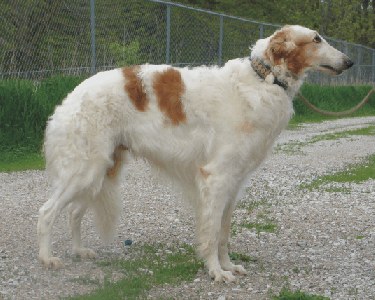 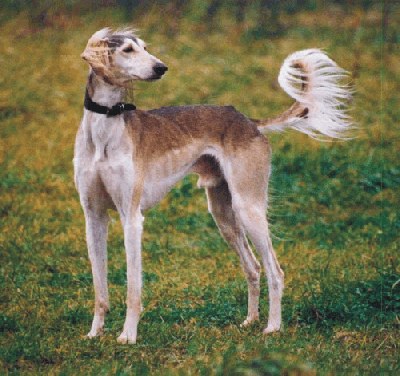 Borzoi © de Caprona ~ Saluki
© Failer ~
References I
Uhríková, A Lačňáková, K Tandlerová, V Kuchařová,
K Řeháková, E Jánovád and J Doubeka (2013): "Haematological
and biomedical Variations among eight Sighthound
breeds." Australian Veterinary Journal,
Vol.91, No 11, November 2013
|